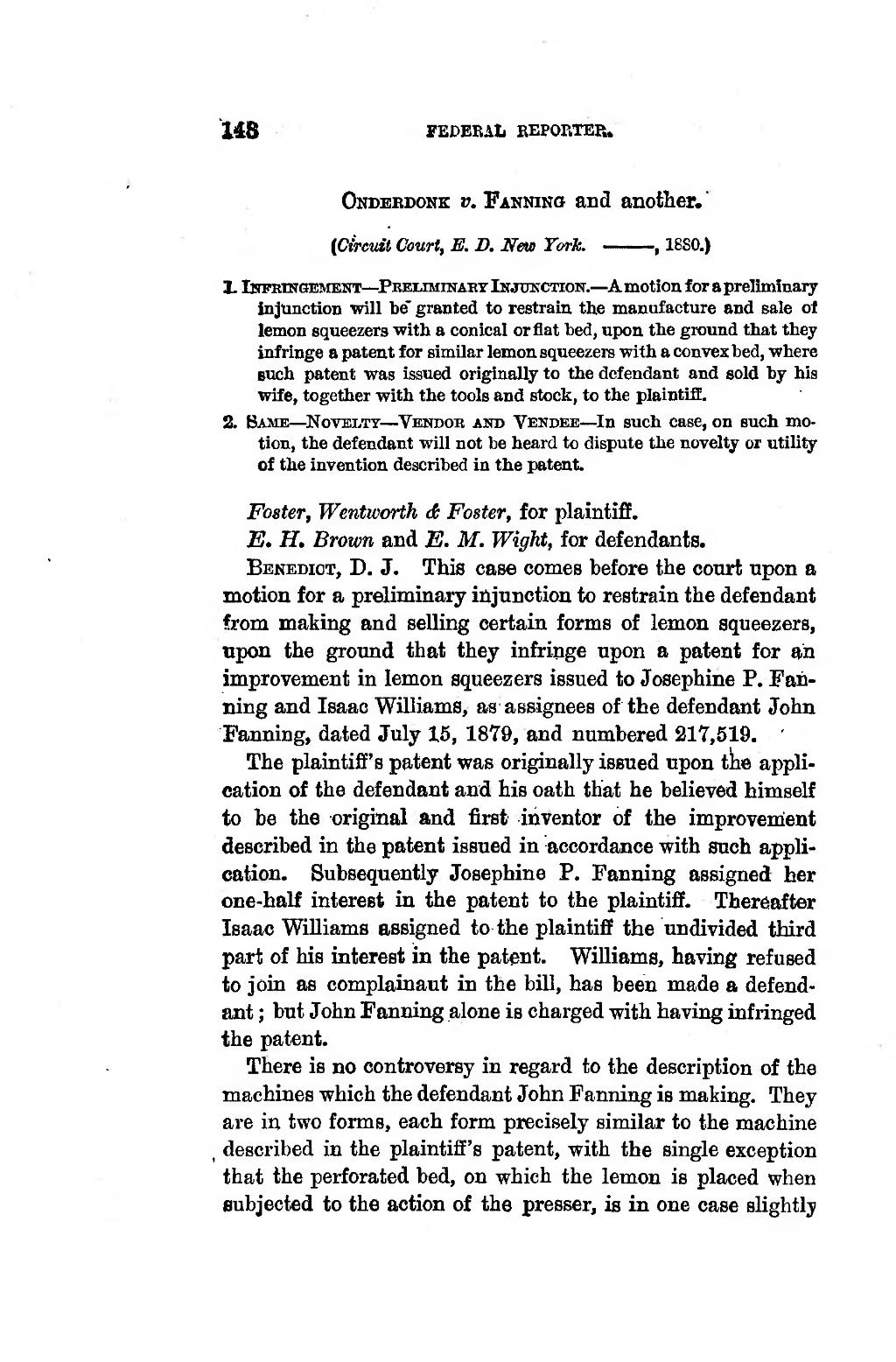"148 FEDEEAti KEPORTER. �Ondebdonk V. Fannino and another. (Circuit Court, E. B. New York. , 18S0.) �1. iHFRiNOEMEitT — Pkeliminabt Injukction. — A motioa for a prelimînary �injunction will be" granted to restrain the manufacture and sale of lemon squeezers with a conical orflat bed, upon the ground that they inf ringe a patent for similar lemon squeezers with a convex bed, where Buch patent was issued originally to the defendant and sold by hia wife, together with the tools and stock, to the plaintlfl. �2. Bamb — NovELTY — Vbndob aitd Vendee— In such case, on such mo- �tion, the defendant will not be heard to dispute the novelty or utility of the invention described in the patent. �Foster, Wentworth e Poster, for plaintiff. �E. H. Brown and E. M. Wight, for defendants. �Benediot, D. J. This case cornes before the court upon a motion for a preliminary iûjunction to restrain the defendant from making and selling certain forms of lemon squeezers, npon the ground that they infringe upon a patent for an improvement in lemon squeezers issued to Josephine P. Fan- ning and Isaac Williams, as assignees of the defendant John Panning, dated July X5, 1879, and numbered 217,619. �The plaintiff' s patent was originally issued upon the appli- cation of the defendant and his oath that he believed himself to be the original and first inventer of the improvenient described in the patent issued in accordance with such appli- cation, Subsequently Josephine P. Fanning assigned her one-half interest in the patent to the plaintiff. Therôafter Isaac Williams assigned to the plaintiff the undivided third part of his interest in the patent. Williams, having refused to join as complainant in the bill, has been made a defend- ant ; but John Panning alone is charged with having infringed the patent. �There is no controversy in regard to the description of the machines which the defendant John Fanning is making. They are in two forms, each form precisely similar to the machine ^ described in the plaintiff's patent, with the single exception that the perforated bed, on which the lemon is placed when Bubjected to the action of the presser, is in one case slightlj ����
